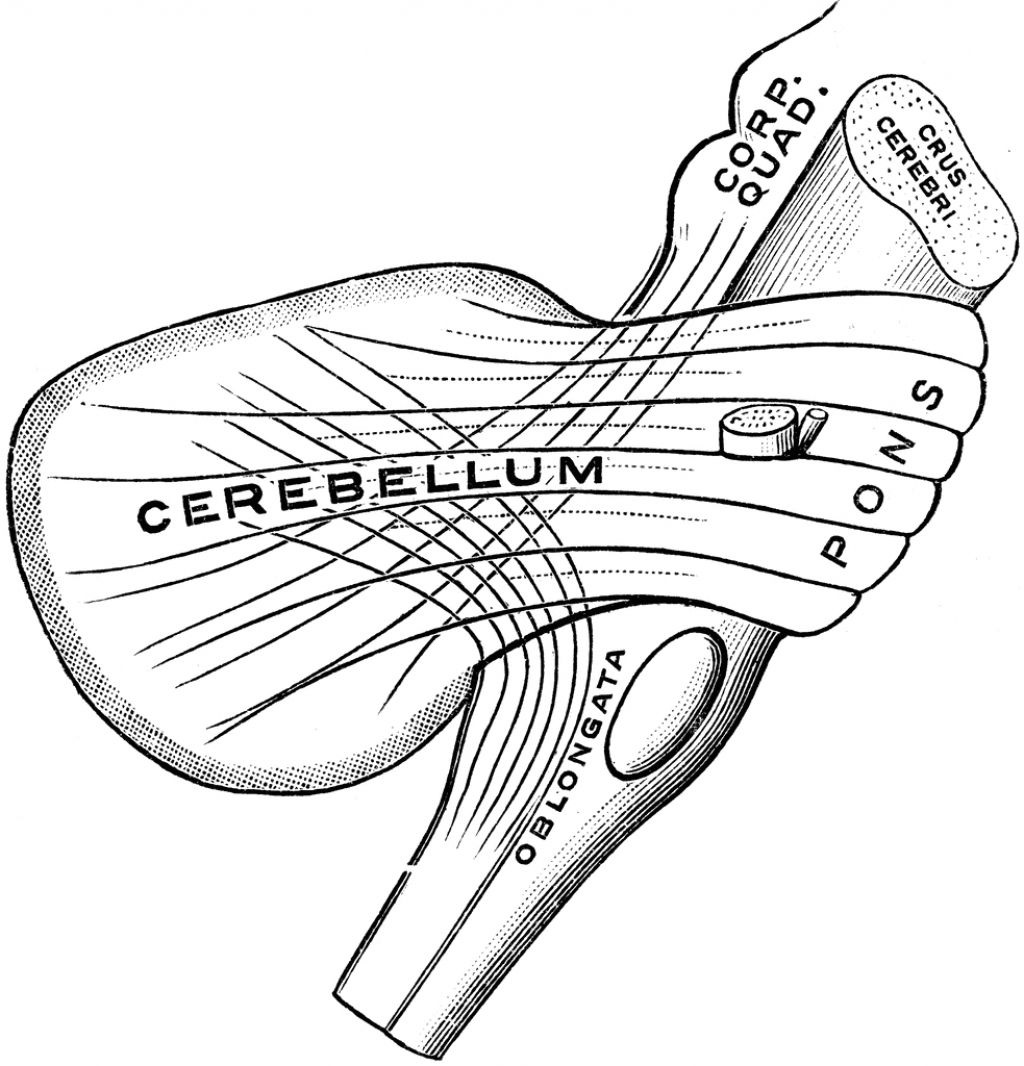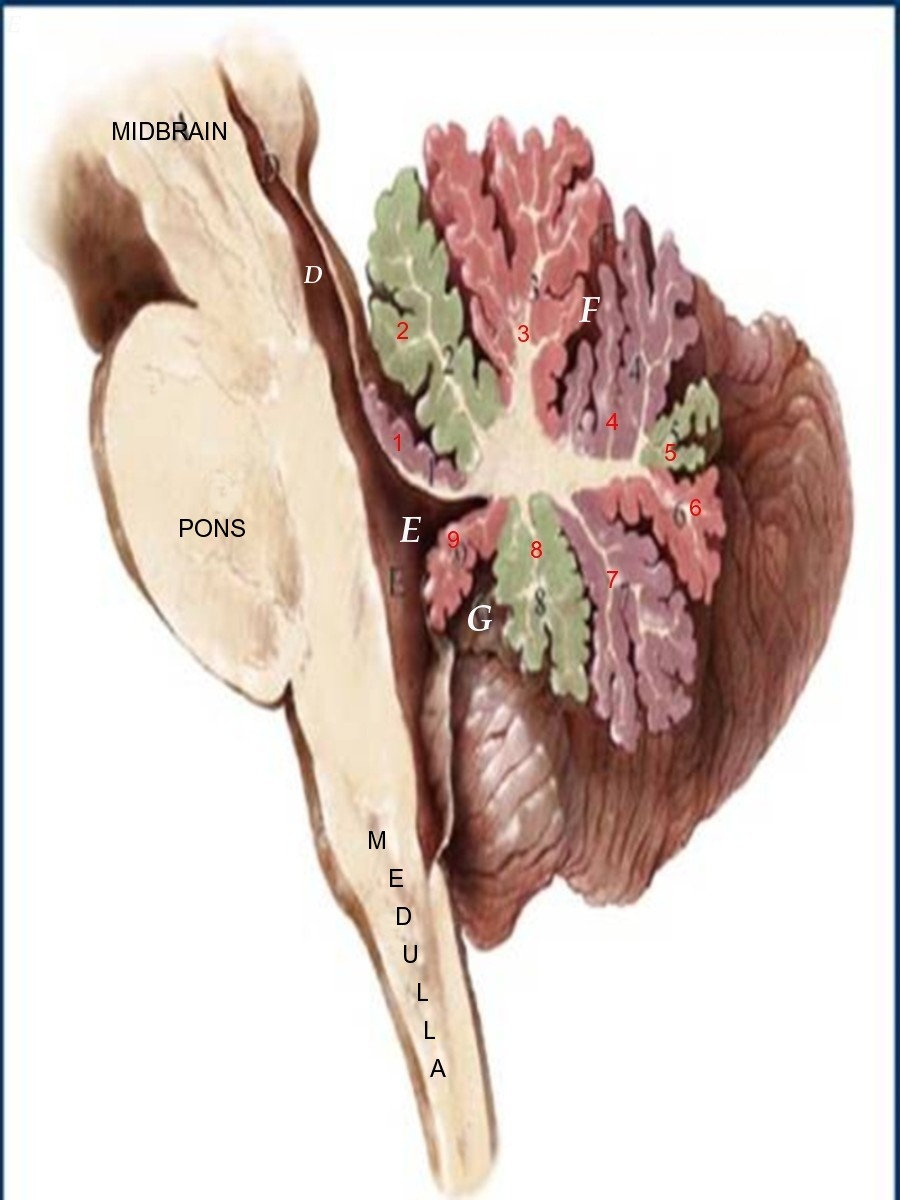The Cerebellum
Definition
Part of the brain is concerned with co-ordination of muscular movements, maintenance of posture and balance
Situation
It is situated behind the pons varolii
Below the posterior portion of the cerebrum
In the posterior cranial fossa
Structure
Consists or 3 parts
Flocculo nodular part
Vermis anterior and posterior
Lateral Hemispheres
Vermis is the narrow median strip
Greay matter on the surface
White matter in the depth
Cerebellum communicates with the other parts of the CNS through three major nerve tracts :
Superior cerebellar peduncle
Middle cerebellar peduncle
Inferior cerebellar peduncle
Funtions
Coordination of groups of voluntary muscles so that movements are smooth, even and precise
Maintenance of body posture
Coordination of activities associated with the maintenance of the balance and equilibrium of body.
Cerebellar activities are not under voluntary control
Sensory input for cerebellum are derived from muscles, joints, eyes and ears (from semicircular canals).
Applied anatomy
Cerebellar dysfunction may cause
Decreased muscle tone,
Imbalance and
Lack of co-ordination
Ataxia
Dysdiadochokinesia
Dysmetria
Dysynergia
Scanning speech
1.Lingula
2. central lobule
3. culmen
4. declive
5. folium
6. tuber
7. pyramis
8. uvula
9. nodulus
A. midbrain
B.pons
C. medulla
D. cerebral aqueduct
E. fourth ventricle
F. primary fissure
G. posterolateral fissure




